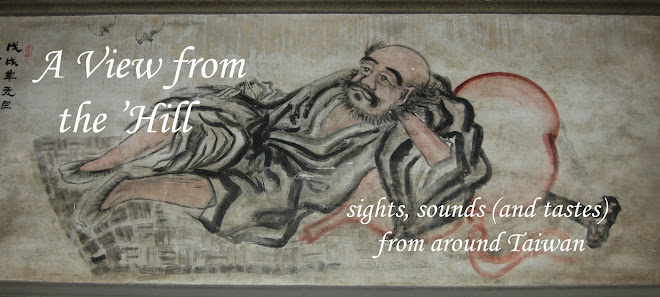Today I was researching Tainan township place name origins (cos that’s the kind of boring guy I am on vacation, though actually they’re pretty interesting because they reflect Aboriginal, Dutch, Zheng, Qing, Japanese and ROC language and history).
I got as far as Shanshang Township (山上鄉), which clearly means “On/in” the “Mountain(s)”, or according to Chinese word order, “Mountains On”.
This set me thinking about China’s Shanghai (上海), which is generally explained/translated as “On the Ocean” (for example see
Asia Times Online, which translates it as “Above the Ocean”.
Probably this is correct, but perhaps not. After all, Shandong (山東) means “East of the Mountains” (unlike Tainan’s Dongshan 東山, which means “Eastern Mountain”) so we might expect 海上 (Haishang) for “On/above the Ocean”.
Chinese grammar far from being “non-existent” as many native speakers claim, or “simple” as many foreign learners claim (not having to worry about conjugations/declensions/tenses/plurals &c. perhaps), is complex because of its ambiguity. 上, for example, has a multitude of grammatical functions including prepositional “on/above ...”, adjectival “upper/last (week) ...”, adverbial “upwards”, verbal “go up” and so on.
Before the noun 海 (“ocean”, which elsewhere could also be adjectival “oceanic”, of course), 上 would normally be adjectival, making Shanghai mean “Upper Ocean”, or verbal, giving “Onto the Ocean”. For a river, 上 most commonly occurs in 上游 “upstream/upper reaches”, which might fit with Shanghai being slightly up the Huangpu River (黃浦江) from the East China Sea (東海).
Or have I been on vacation too long and the sun is addling my brain? In any case, one thing my studying of place names is teaching me is that “everything is possible” (see Bejing 北京 “Northern Capital” compared with Taipei 台北 “Taiwan North [Part?]”). So I guess Shanghai is just an unusual way of saying “on the ocean”.

.jpg)

.jpg)
.jpg)






